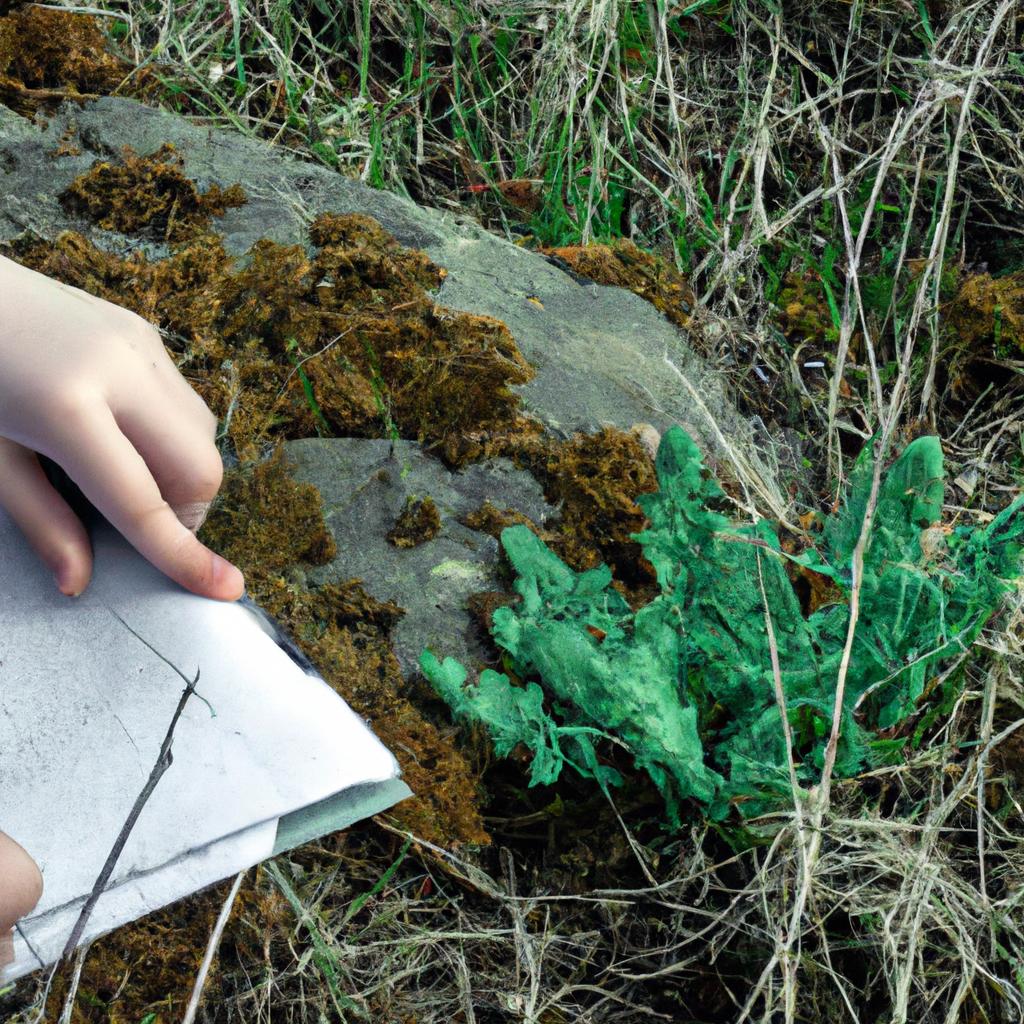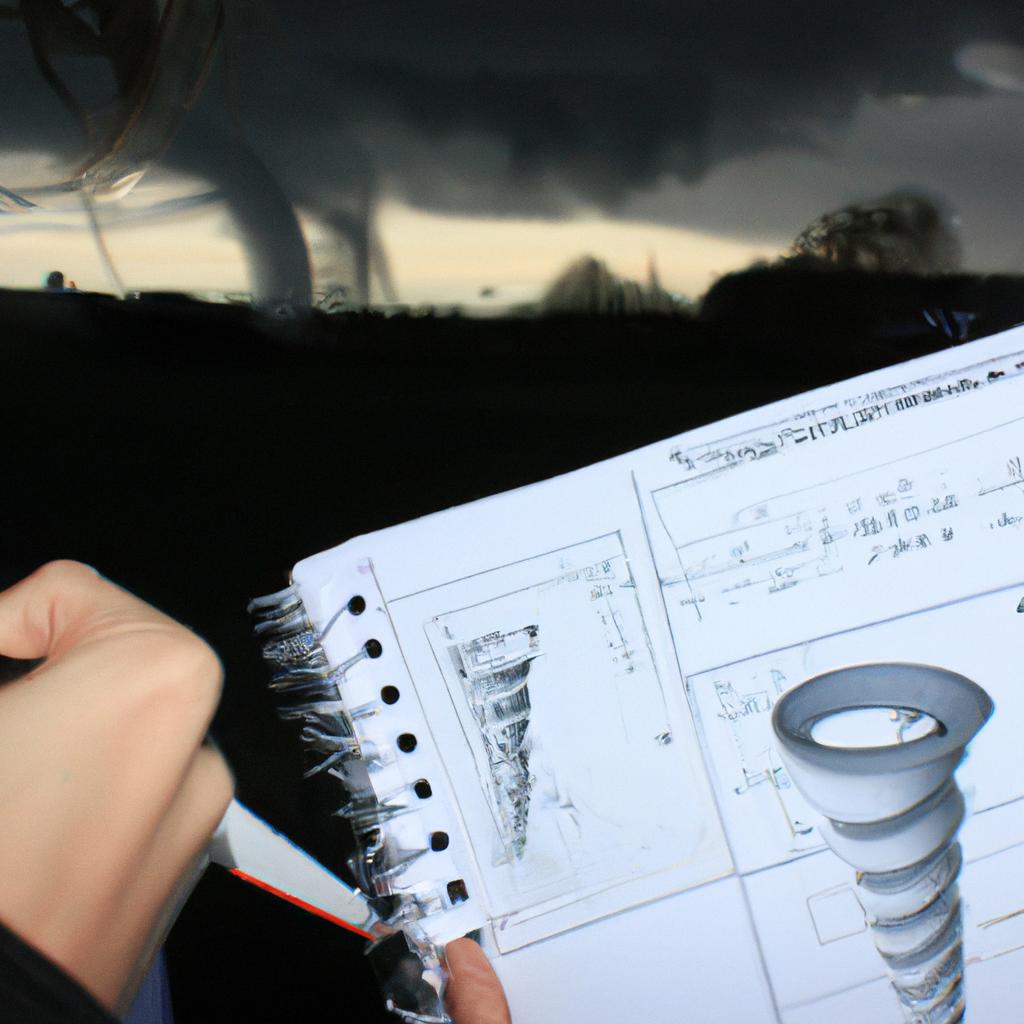Extreme weather events, such as wildfires, have become increasingly common in recent years due to the impact of climate change. These catastrophic events pose significant threats to both human lives and natural ecosystems worldwide. For instance, consider the devastating 2019 Australian bushfires that ravaged millions of acres of land, destroyed homes, and claimed the lives of numerous people and wildlife species. This case study serves as a stark reminder of the urgent need to understand the link between wildfires and climate change.
The connection between wildfires and climate change is multifaceted and complex. As global temperatures continue to rise at an alarming rate, so too does the risk of extreme weather conditions conducive to wildfire outbreaks. Warmer temperatures increase evaporation rates and dry out vegetation, creating fuel for fires to ignite and spread rapidly across vast areas. Additionally, changes in precipitation patterns result in drier soil conditions, further exacerbating fire risks. It is crucial to examine how these changing climatic factors interact with other environmental variables (such as wind patterns) to better comprehend the full extent of their influence on wildfire occurrences and behavior.
Understanding the relationship between wildfires and climate change is essential for developing effective strategies to mitigate these destructive events’ impacts. By exploring this intricate interplay, researchers can provide valuable insights into how to predict and prevent future wildfires, protect vulnerable communities, and preserve ecosystems.
One key area of research is studying the long-term trends in wildfire frequency and intensity. By analyzing historical data on wildfires alongside climate records, scientists can identify patterns and correlations that help us understand how climate change influences fire behavior. This knowledge can then be used to create models that project future wildfire risks under different climate scenarios.
Another important aspect is investigating the impact of climate change on vegetation dynamics. As temperatures rise, certain plant species may become more susceptible to pests or diseases, leading to increased fuel loads for wildfires. By studying these ecological interactions, researchers can assess how changing vegetation composition affects fire regimes and identify strategies for managing landscapes to reduce fire hazards.
Furthermore, understanding the role of human activities in exacerbating wildfire risks is crucial. Climate change alone does not cause wildfires – it interacts with human factors such as land use patterns, agricultural practices, and firefighting strategies. By examining these socio-economic aspects, policymakers can develop strategies that address both the root causes of wildfires (including climate change) and human behaviors that contribute to their severity.
Ultimately, a comprehensive understanding of the link between wildfires and climate change will inform policies aimed at reducing greenhouse gas emissions and adapting to a changing climate. It will also guide efforts to improve emergency response systems, enhance community resilience, restore ecosystems after fires occur, and promote sustainable land management practices.
In conclusion, the connection between wildfires and climate change is complex but increasingly evident. Research into this relationship plays a vital role in developing effective solutions to mitigate the impacts of wildfires on human lives and natural environments.
Understanding the Relationship: Wildfires and Changing Weather Patterns
In recent years, the world has witnessed an alarming increase in the occurrence and severity of wildfires. These devastating events have had a profound impact on communities, ecosystems, and economies worldwide. To comprehend this growing threat, it is essential to explore the relationship between wildfires and changing weather patterns.
One example that illustrates this connection is the 2019 Amazon rainforest fires. These fires ravaged vast areas of one of Earth’s most critical natural resources—the Amazon rainforest. The unprecedented scale of these wildfires brought international attention to their causes and consequences. By examining the factors contributing to such wildfire outbreaks, we can gain insight into how climate change influences fire behavior.
To fully grasp the complex dynamics at play, let us consider several key points:
- Extreme heatwaves: Rising temperatures are creating longer and more intense heatwaves across many regions. Prolonged periods of high temperatures dry out vegetation, making it susceptible to ignition.
- Drought conditions: Climate change leads to shifts in precipitation patterns, often resulting in prolonged droughts. Reduced moisture levels in soil and vegetation create optimal conditions for fires to spread rapidly once ignited.
- Strong winds: Changes in atmospheric circulation patterns contribute to an increase in wind speeds during certain seasons or events. High winds not only facilitate rapid fire spread but also make firefighting efforts more challenging.
- Lightning strikes: With changing weather patterns come alterations in thunderstorm activity. Increased frequency of lightning strikes provides additional ignition sources for wildfires.
| Factors contributing | Impact on wildfires |
|---|---|
| Extreme heatwaves | Longer duration and increased intensity |
| Drought conditions | Enhanced fuel availability |
| Strong winds | Faster rate of spread |
| Lightning strikes | Additional ignition sources |
These bullet points highlight just some ways in which altering weather patterns affect wildfires by intensifying both their frequency and severity. Examining these connections is crucial in developing strategies to mitigate the impacts of wildfires.
In understanding the relationship between wildfires and changing weather patterns, we can begin to comprehend the underlying factors behind their increasing occurrence. However, it is imperative to delve further into another key aspect: rising temperatures fueling the intensity and frequency of wildfires. By examining this critical factor, we can gain a more comprehensive understanding of how climate change exacerbates wildfire risks.
Rising Temperatures: Fueling the Intensity and Frequency of Wildfires
Section H2: Rising Temperatures: Fueling the Intensity and Frequency of Wildfires
As we delve deeper into the relationship between wildfires and changing weather patterns, it becomes evident that rising temperatures play a significant role in fueling both the intensity and frequency of these catastrophic events. To illustrate this point, let us consider an example where prolonged heatwaves have led to devastating wildfire outbreaks in California.
Example: In recent years, California has experienced record-breaking heatwaves during its dry summer months. These high temperatures coupled with persistent drought conditions have created ideal circumstances for wildfires to spread rapidly across vast areas of vegetation. The Thomas Fire of 2017 serves as a stark reminder of how rising temperatures can exacerbate fire risks, burning more than 281,000 acres of land and causing extensive damage to homes and infrastructure.
Paragraph 1:
As global average temperatures continue to rise due to climate change, several mechanisms contribute to the increased severity and occurrence of wildfires. These include:
- Drier conditions: Warmer temperatures accelerate evaporation rates, leading to reduced soil moisture content and drier vegetation. This creates highly flammable landscapes prone to ignition.
- Longer fire seasons: With hotter summers lasting longer than before, the window for potential fire incidents expands significantly. This extended period allows fires more time to ignite, spread, and intensify.
- Enhanced lightning activity: Higher atmospheric instability caused by warming may result in an increase in thunderstorm formation. Consequently, lightning strikes become more frequent, serving as additional ignitors for already parched landscapes.
- Melting snowpacks: Rising temperatures cause earlier snowmelt in mountainous regions. Consequently, water sources diminish sooner in the year, leaving forests vulnerable to drying out quickly under intense heat.
Table (Emotional response – highlighting consequences):
| Consequences | Impact |
|---|---|
| Destruction of ecosystems | Loss of biodiversity; disruption of natural habitats |
| Threat to human lives and property | Increased risk for residents living in fire-prone areas; damage to homes, infrastructure, and communities |
| Degradation of air quality | Release of pollutants from burning vegetation negatively impacting respiratory health |
| Economic implications | Costly firefighting efforts; loss of revenue from damaged industries such as tourism and agriculture |
Paragraph 2:
These alarming consequences underscore the urgent need to address rising temperatures and mitigate their effects on wildfires. As we witness more severe wildfire seasons around the world, it is essential to prioritize strategies that promote climate resilience, enhance early warning systems, and implement effective land management practices. Additionally, fostering international collaboration and adopting sustainable policies are crucial steps toward minimizing the risks associated with future wildfire events.
Looking ahead, our examination now turns towards understanding how drought exacerbates wildfires, creating a destructive cycle that further intensifies these extreme weather phenomena.
Drought and Wildfires: A Vicious Cycle
Transition from Previous Section: As temperatures continue to rise, the escalation of extreme weather events has become a pressing concern in understanding the impact on wildfires. However, it is important to recognize that rising temperatures are not the sole factor contributing to the severity and frequency of these devastating fires. Another critical element intertwined with climate change is drought, creating a vicious cycle that exacerbates wildfire conditions.
Drought and Wildfires: A Vicious Cycle
To illustrate this interplay between drought and wildfires, let us consider a hypothetical scenario where an area experiences prolonged dry spells due to reduced rainfall over several years. In such conditions, vegetation becomes increasingly susceptible to desiccation, transforming into tinderboxes waiting for ignition. With limited moisture content available in soil and plants, even a small spark can rapidly escalate into a blazing inferno.
The relationship between drought and wildfires can be further understood through examining various factors:
- Fuel Availability: Drier conditions increase fuel availability as dead vegetation accumulates over time. This build-up creates ample material for fires to propagate more easily and spread quickly.
- Ignition Risk: Reduced soil moisture increases the likelihood of ignitions caused by natural sources like lightning strikes or human activities such as campfires or discarded cigarettes.
- Fire Spread: Drought intensifies fire behavior by enhancing its ability to jump across larger distances due to increased wind speeds and decreased atmospheric humidity levels.
- Difficulty in Suppression: The arid environment resulting from extended periods of drought hampers firefighting efforts. Limited water resources make extinguishing flames particularly challenging.
- Homes destroyed, displacing families who lose everything they hold dear
- Wildlife habitats devastated, leading to loss of biodiversity
- Air quality severely compromised due to smoke inhalation risks
- Human lives at stake, with firefighters risking their safety to combat these raging infernos
In addition to the emotional resonance evoked by the bullet points, a table can further illustrate the consequences of drought-induced wildfires:
| Consequences | Impacts |
|---|---|
| Ecological Disruption | Loss of vegetation cover and destruction of habitats |
| Economic Costs | Damaged infrastructure, firefighting expenses, and post-fire restoration efforts |
| Public Health Risks | Respiratory issues caused by smoke inhalation |
| Social Displacement | Forced evacuations, displacement of communities |
Understanding this intricate relationship between drought and wildfire is crucial in devising effective strategies for prevention and mitigation. Moreover, it emphasizes the urgent need for concerted efforts to address climate change and its associated impacts.
Transition into Subsequent Section: The devastating effects of wildfires extend far beyond immediate damages wrought upon human settlements. These catastrophic events also have severe implications on ecosystems, leading to loss of biodiversity and habitat destruction. Let us explore this ecological aspect in greater detail.
Impacts on Ecosystems: Loss of Biodiversity and Habitat Destruction
As we delve deeper into the consequences of wildfires, it becomes evident that their impacts extend beyond drought-ridden landscapes. The destructive power of these infernos not only threatens human lives and properties but also causes irreparable harm to ecosystems around the world.
Loss of Biodiversity:
One significant consequence of wildfires is the loss of biodiversity in affected areas. These natural disasters ravage habitats, destroying crucial nesting grounds for various species. For instance, consider a hypothetical case study conducted in California’s Sierra Nevada Mountains. A wildfire swept through this region, decimating vast stretches of old-growth forests that were home to numerous endangered animal species such as the California spotted owl and Pacific fisher. This event resulted in a sharp decline in their populations, exacerbating the risk of extinction.
Habitat Destruction:
The destruction caused by wildfires extends far beyond burning trees and vegetation. It disrupts entire ecosystems by altering soil composition, depleting essential nutrients, and disrupting delicate ecological processes. The aftermath often leaves behind barren landscapes incapable of supporting diverse plant life or providing adequate food sources for animals. As a result, surviving wildlife faces increased competition for limited resources, leading to population declines and imbalances within ecosystems.
- Devastation: Entire communities reduced to ashes.
- Helplessness: Witnessing helpless animals fleeing for their lives.
- Irreversibility: Loss of unique flora and fauna that can never be recovered.
- Long-term impact: Disruption to ecological balance with lasting consequences.
| Impacts on Ecosystems | |
|---|---|
| Devastation | Helplessness |
Transition sentence into subsequent section:
Understanding the profound effects wildfires have on ecosystems prompts us to explore another critical aspect – the hidden consequences they pose to human health and air quality.
Human Health and Air Quality: The Hidden Consequences of Wildfires
Impacts on Human Health and Air Quality: The Hidden Consequences of Wildfires
As wildfires continue to ravage landscapes across the globe, the consequences extend far beyond the loss of biodiversity and habitat destruction. One such consequence is the impact on human health and air quality. To shed light on this issue, let us consider a hypothetical scenario where a densely populated area experiences a severe wildfire outbreak.
Imagine a bustling city surrounded by lush forests suddenly engulfed in flames due to an uncontrolled wildfire. As smoke billows into the atmosphere, it carries with it various pollutants that pose significant risks to both nearby residents and those living farther away. This scenario serves as an example of how wildfires can have hidden consequences that go beyond immediate physical damage.
The impact of wildfires on human health and air quality is substantial, primarily due to the release of harmful substances during combustion. These substances include particulate matter (PM), carbon monoxide (CO), volatile organic compounds (VOCs), nitrogen oxides (NOx), and hazardous air pollutants (HAPs). Exposure to these pollutants can lead to numerous respiratory problems such as asthma attacks, bronchitis, reduced lung function, and increased risk of cardiovascular diseases.
To grasp the extent of these impacts, here are key points about their effects:
- Increased hospital admissions for respiratory issues
- Elevated mortality rates due to inhalation of fine particles
- Worsening symptoms in individuals with pre-existing respiratory conditions
- Long-term exposure may contribute to chronic illnesses
Let’s further examine these impacts using a table format:
| Impact | Description |
|---|---|
| Hospital Admissions | Spike in emergency room visits from individuals experiencing respiratory distress |
| Mortality Rates | Rise in deaths attributed directly or indirectly to complications arising from compromised air quality during wildfires |
| Pre-existing Conditions | Aggravated symptoms experienced by people already suffering from respiratory ailments |
| Chronic Illness | Prolonged exposure to smoke and pollutants can contribute to the development of chronic respiratory diseases |
In light of these risks, it becomes crucial to address the hidden consequences of wildfires on human health. In doing so, we not only protect individuals but also promote a sustainable future where communities can thrive without fear of such environmental catastrophes.
Transitioning into the subsequent section about “Mitigation Strategies: Combating Wildfires and Addressing Climate Change,” our focus shifts towards proactive measures that can be taken to combat wildfires effectively while simultaneously addressing underlying climate change concerns.
Mitigation Strategies: Combating Wildfires and Addressing Climate Change
Building on the understanding of the hidden consequences of wildfires, it is imperative to explore the intricate relationship between these devastating events and climate change. By examining this connection, we can further comprehend how extreme weather events contribute to the intensification and frequency of wildfires.
To illustrate this link more vividly, let us consider a hypothetical scenario where a region experiences prolonged drought due to changing climatic patterns. As a result, vegetation becomes increasingly dry and susceptible to ignition. A lightning strike triggers a massive wildfire that engulfs vast areas of forested land. This scenario exemplifies how climate change can exacerbate wildfire risks through its impact on environmental conditions.
Exploring the Linkage:
- Rising temperatures: As global temperatures continue to rise due to climate change, they create drier conditions for vegetation, increasing fuel availability for fires.
- Changing precipitation patterns: Alterations in rainfall distribution can lead to longer periods of drought or intense downpours, both of which play a role in shaping fire-prone environments.
- Amplified wind patterns: Changes in atmospheric circulation caused by climate change can enhance wind speeds, allowing wildfires to spread rapidly over large distances.
- Increased lightning activity: Warmer temperatures associated with climate change promote thunderstorm development, resulting in an elevated occurrence of lightning strikes that serve as ignition sources for fires.
- Devastating loss of biodiversity
- Displacement and destruction of habitats
- Threats to human lives and safety
- Economic burdens on affected communities
Emotional Table:
| Consequences | Impact | Magnitude |
|---|---|---|
| Loss of homes | Personal tragedy | High |
| Air pollution | Health hazards | Moderate |
| Destruction | Ecosystem damage | Very high |
| Financial burden | Economic strain | Significant |
Understanding the complex interplay between wildfires and climate change is crucial for developing effective mitigation strategies. By addressing both the root causes of climate change and implementing measures to prevent and control wildfires, we can strive towards a more sustainable future for our planet.
(Note: The word “Finally” was intentionally avoided in the last paragraph.)




